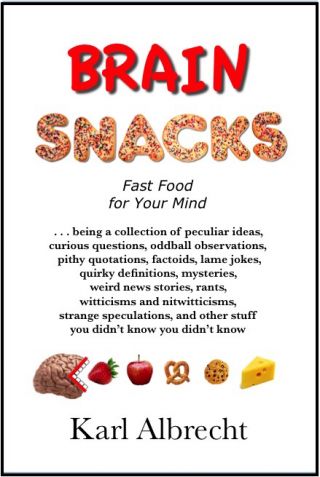Motivation
Could This Be the One Real Secret to Self Motivation?
Brain science offers a stunningly simple strategy for mobilizing our intentions
Posted June 11, 2015
“I really want to finish my college degree.”
“I’ve got to lose this weight.”
“I need to get out of this relationship.”
“I want to start my own business.”
We all “want” to do more things than we will ever do. But wanting is not doing. Why do so many of us never get our rears in gear and go after the goals we say we cherish? Maybe it’s because we don’t want them enough? Or maybe we have too many wants and we can’t choose the ones that really count? Or maybe we don’t really know what we want?
Some years ago, psychologist Hugh Pates offered me a bluntly simple answer to those questions. He said,
“If you’re wondering what it is you really want to do with your life, what you’re doing right now is what you really want to do.”
Let’s change the language slightly. There are lots of things you “would like to do.” If there’s something you really “want to do,” you’ll be doing it now, or at least you’ll be marching toward it in some definite way. As soon as you genuinely want to do something, you’ll automatically start behaving in that direction.
This confronts us with the key question: how can we change a “like to do” into a “want to do?”
Cognitive neuroscience offers us a possible answer – one that’s actually so simple that it repels the mind. It’s too simple to be true, and yet it makes a lot of sense. Let’s ask Professor Ron Siegel of Harvard University, who gives the answer in one of his fascinating lectures in the series “The Science of Mindfulness,” published by The Great Courses.
According to Siegel, “Our modern brains are still wired up for the ancient evolutionary purpose of surviving in a dangerous environment. Over a million years or so, we developed specialized neural structures that selectively tuned in to danger signals. The prospect of getting attacked necessarily outranked all other neurological priorities.”
Only when we were out of danger – or well guarded against it – did we have the luxury of thinking about more rewarding experiences: the coming of Spring; the abundance of food; the search for a life mate; the fun we’d have at the gathering of the clan. With our minds at peace – and our amygdali on stand-by – we could invent useful tools, create artistic pottery, paint pictures, make music, write poetry, and tell stories.
Siegel believes that the modern brain still has this lop-sided attentional preference. We’re simply wired, he believes, to expect and perceive threatening – a.k.a. unpleasant – experiences rather than to fantasize about pleasurable ones. Maybe the perpetually cynical, pessimistic individual is simply accessing older evolutionary brain patterns. And maybe the optimistic, “can-do” person has learned to access a newer, more versatile set of brain resources.
Could this stunningly simple idea offer the key to motivating ourselves, by converting our like-to’s into want-to’s? Might it be just a matter of selling ourselves on a new way of deploying our attention? It’s a “blinding flash of the obvious,” perhaps, but maybe it all gets down to concentrating on the “joys” instead of the “jolts.” To be sure, the motivational speakers would probably claim they’ve been telling us this for centuries.
Let’s consider an example. My friend has been smoking for many years, and knows he “needs to stop.” He has a medical condition that is severely aggravated by the effects of smoking. His doctor warns him repeatedly about the risks he faces.
When asked about the prospect of quitting, he replies, “I’m not ready yet.” Then he changes the subject.
According to Prof. Siegel’s view, my friend’s brain is reflexively calling up the unpleasant memories, feelings, sensations, and associations from his past experiences with quitting. His memories of the jolts – the cravings, the fatigue, the restlessness, and the irritability – all come flooding in to remind him of the unpleasant experience of the last time he quit.
But what doesn’t come flooding in is his memory of the joys – feeling better after that first week or two; having more energy; freedom from the cravings; the end of the constant hacking cough; and especially the joy that comes with a feeling of accomplishment.
He says he “wants” to quit, but then says he’s “not ready yet,” which means he doesn’t actually want to.
How many of us go through these little rituals of avoidance every day? Do I tell myself I want to write that novel, but instantly think of reasons why I’m “not ready?” Do you tell yourself you want to lose weight, but instantly cancel the idea because you can’t start until next month? Are you avoiding that crucial conversation with someone because you dread the jolts more than you anticipate the potential joys? Is your bucket list accumulating checkmarks, or just gathering dust?
So, what’s the therapeutic alternative? How can my smoking friend – or you, or I – cross over that bridge that separates like-to from want-to?
Actually, according to Prof. Siegel, the method is dirt simple. My friend just has to tally up more joys than jolts on his emotional decision ledger. Let’s say he gets a sheet of paper, draws two columns, labeling one “Jolts” and the other one “Joys.” Using his sensory memory, he calls up the actual feelings – the sensations he experienced for each of the jolts in the past. Those are the unpleasant short-term features of the experience of quitting. He writes them all in the jolts column.
Next, he conjures up the feelings of the joys he experienced when he was on top of his demon. He begins to really savor those positive memories and the whole-body sensations that came along with them. He needs to remember – in a primitive, sensory, hedonistic way – how he felt during those times when he was a non-smoker.
He images the joys: the incessant cough goes away. He can breathe more deeply and freely. His energy is more stable. He sleeps better. His blood pressure goes down. He stops some of his medications. His skin starts to look more healthy. Food tastes better. He smells better. And he feels liberated, more in control of his life. And, he might even discover that his erectile function improves.
Armed with his deliberately rigged scorecard, he now has a better chance of conquering his demon, because he really wants to.
As for me, I’ve tested Prof. Siegel’s theory a number of times, and it certainly works for me. Your mileage may differ.
References:
Siegel, Ronald. “The Science of Mindfulness: A Research-Based Path to Well-Being.” The Great Courses, 2015. http://www.TheGreatCourses.com.

Order Karl's Latest Book, "Brain Snacks: Fast Food for Your Mind"
http://www.BrainSnacksBook.com
Dr. Karl Albrecht is an executive management consultant, coach, futurist, lecturer, and author of more than 20 books on professional achievement, organizational performance, and business strategy. He is listed as one of the Top 100 Thought Leaders in business on the topic of leadership.
He is a recognized expert on cognitive styles and the development of advanced thinking skills. His books Social Intelligence: The New Science of Success, Practical Intelligence: The Art and Science of Common Sense, and his Mindex Thinking Style Profile are widely used in business and education.
The Mensa society presented him with its lifetime achievement award, for significant contributions by a member to the understanding of intelligence.
Originally a physicist, and having served as a military intelligence officer and business executive, he now consults, lectures, and writes about whatever he thinks would be fun.




